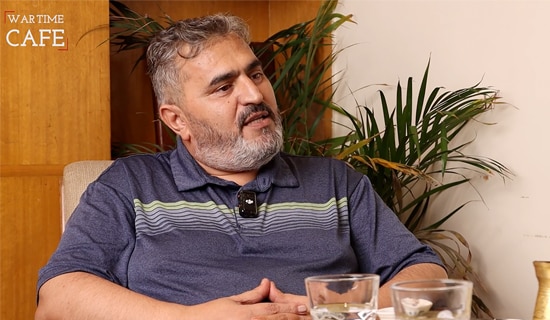The chief researcher of the Russian Academy of Sciences' Institute of Economics, Igor Nikolaev, has extrapolated from official statistics that retail sales are down for the year and the fall would have been even greater without the panic buying that followed the invasion of Ukraine. More importantly this is not limited to discretionary purchases but the decline extends even to food purchases. These indicators show "growing distress"
Nikolaev's analysis follows below:[1]

Igor Nikolaev (Source: Infopro54.ru)
Trade, according to the oft-repeated 19th century saying, is the driver of progress. If that’s the case, then we are not doing very well in terms of progress. Retail trade in Russia in the outgoing year 2022 demonstrated, to put it mildly, not the best results. Furthermore, if it is compared with other types of economic activity, the monthly drop of about 9% in recent months looks like a clear failure.
But this was of little concern, because we know how much retail sales of those same cars have fallen. At the best of times, hundreds of billions of rubles were spent annually to buy them. In January-September 2022, retail turnover for passenger cars collapsed, according to Rosstat, by nearly 40% compared to the same period in 2021. However, there has clearly been more negativity in the trade in recent months, and not just related to car sales.
But this was of little concern, because we knew how much retail sales of the very same cars have dropped. At the best of times, hundreds of billions of rubles were spent annually to buy vehicles. According to Rosstat [Federal Statistics Service], in January-September of 2022, retail turnover for cars collapsed, by nearly 40% compared to the same period in 2021. However, there has clearly been more negative trends observed in the trade in recent months (and not limited to car sales).
Particular attention should be paid to sales of food products. People think, and not without reason, “crisis or no crisis, but we always want to eat.” That is why people were buying, continue to buy and will buy food under any circumstances. And it’s a correct assumption. But if there is an obvious crisis in the economy, if living standards drop, people will even buy less food products. Some products will have to be abandoned altogether, and in some cases, people will turn to cheaper food. Let’s also keep in mind that when it comes to saving money on food, people turn to stockpiles and eat them up. [pardon the expression] One can economize that way too.
Now let’s take a look at what we have in terms of retail sales for foodstuffs. According to the latest available data from Rosstat, in October of 2022 food retail turnover fell by 4.3% compared to the same period last year. In September of 2022, the decline in retail turnover was 3.5%. this is a significant decline in sales figures for food products. Previously, the monthly sales decline figures were at 1-2%. A negative trend is emerging as the decline in sales is growing.
A curious picture was provided by information on what is happening to sales of basic foodstuffs. The following are statistics for the January-September period of 2022 from the same Rosstat compared to the corresponding period in 2022 [sic should be 2021]: sales of sugar fell by 6.5%; cereals - by 4.4%; fish - by 3.5%; fresh fruit - by 3.3%; salt - by 3.2%...
If someone, without really would direct attention to the sugar figures, to argue that this decline is fully comprehensible as this isn't the season for making preserves, I’ll have to disappoint him: all these comparisons are made on an annual basis, in addition the period January-September is taken for consideration. So, this kind of reassuring argumentation is, clearly unsuitable.
The sales decline indicators for individual foodstuffs confirm the assumption that people are either actively expending their stocks of food (sugar, cereals, salt), or are, clearly, economizing (for instance, fish, fresh fruit). It is possible, however, to do both: to use up one stocks and to save. Either way, these are indicators of growing distress.
Now let’s take a look at the situation with the non-food group of goods. Sales in this segment fell by 14.3% in October of 2022, compared with the same period last year. Passenger cars [sales] have declined the most (as mentioned earlier).
In addition, in January-September of 2022, sales of watches fell by 23.9% in annual terms; mobile phones - by 18.1%; jewelry - by 17.7%; and in photographic equipment - by 17.5%...
As we can see, the decline is significant. Let’s consider the fact that all these figures for January-September 2022 are “improved” by the statistics from the first quarter, when the picture was reversed. Naturally, this is true for cars. It turns out that the statistics for second and third quarters of 2022 alone have worsened the overall figures from the beginning of the year to such a degree.
Curiously, there are also product groups, sales of which are even growing. In January-September of 2022, for instance, retail sales of medicines increased by 8.3% year-on-year. Generally speaking, everything is clear in this regard: the effects of the pandemic, new viruses, fears about the disappearance of imported medicines from shops due to a “wave” of anti-Russia sanctions...
It's important to note that there is a fundamental difference between the reasons for the drop in retail turnover for food products and non-food products.
The world’s largest car manufacturers have scrapped production in Russia since spring 2022, refusing to supply their products to the country. As for other products (jewelry, watches, mobile phones), the sanctions have also played a negative role here. Naturally, the fact that the economic crisis has affected the Russian middle class, which buys these products to a considerable extent, played a role. Hence, the natural desire to save money, to postpone buying something unnecessary until better times. The result is a fall in sales.
[1] Mk.ru., December 25, 2022.




